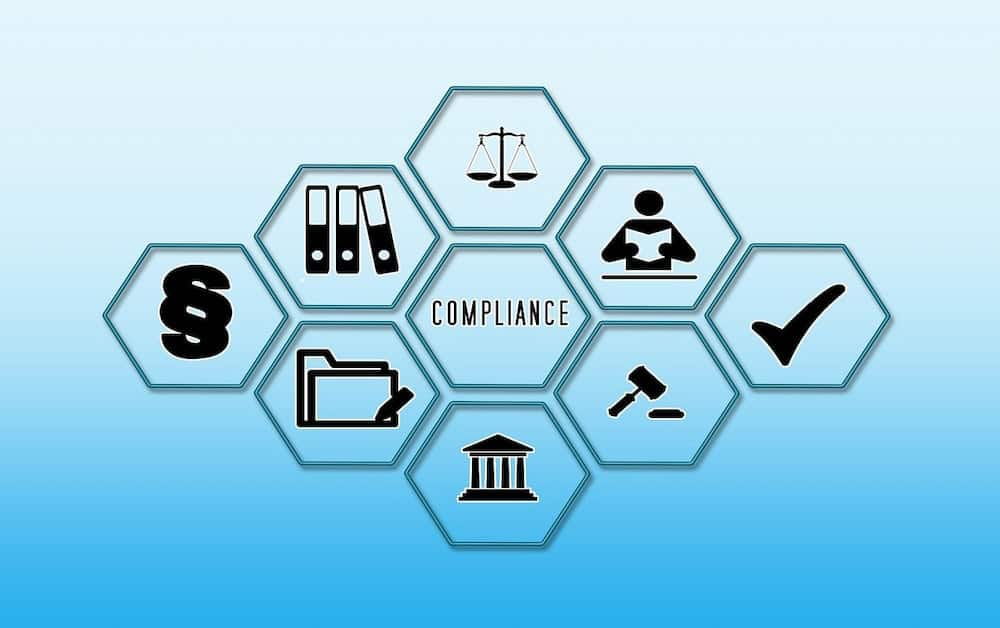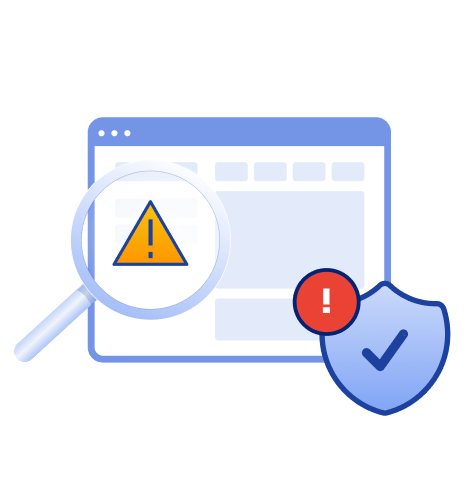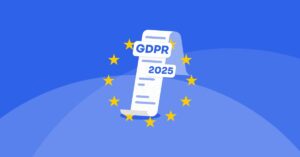Introduction
As businesses increasingly operate in a digital landscape, ensuring compliance with relevant laws, regulations, and industry standards is critical. A failure to meet these requirements can expose organizations to severe consequences, including financial penalties, reputational damage, operational disruptions, and issues related to legal compliance. Identifying potential non-compliance risks for your website is a crucial step in maintaining smooth business operations and safeguarding your company’s interests. This article will delve into the common compliance risks, key factors in mitigating them, and strategies for maintaining ongoing regulatory compliance.
Understanding Compliance Risks in the Digital Space
Compliance risks arise when a business or its website does not adhere to legal and regulatory requirements. These risks vary depending on the industry, jurisdiction, and the nature of the business. For websites, compliance risks can involve issues such as data privacy, financial transactions, and accessibility for users with disabilities.
One significant compliance risk is the mishandling of consumer data, particularly sensitive information such as payment card data or personal details. Non-compliance with data protection regulations, such as the General Data Protection Regulation (GDPR), can lead to legal penalties and significant financial repercussions. Identifying these risks early is crucial for managing compliance and avoiding potential legal liabilities.
Regulatory Compliance and Its Importance
Regulatory compliance refers to the process of ensuring that a company follows all applicable laws, regulations, and industry standards. For website operators, regulatory compliance can include adhering to the GDPR, Payment Card Industry Data Security Standards (PCI DSS), and occupational safety regulations, among others. Compliance efforts are aimed at mitigating risks and maintaining the trust of customers, regulatory bodies, and stakeholders.
Non-compliance can have far-reaching consequences. In addition to financial penalties and legal fees, businesses may face reputational damage that can erode customer trust. A robust compliance program is essential for minimizing risks and ensuring ongoing compliance with regulatory requirements.
The Role of Compliance Risk Management
Manage compliance risk by identifying, assessing, and mitigating risks associated with non-compliance. Businesses can proactively address potential vulnerabilities by developing a comprehensive compliance risk management plan. Key factors include conducting thorough risk assessments, implementing security protocols, and training employees on compliance measures.
The compliance team plays a vital role in this process, working closely with other departments to ensure compliance across all aspects of the business. By continually monitoring risks and adapting to changes in regulatory requirements, organizations can avoid common compliance risks and maintain business continuity.

Consequences of Non-Compliance
The consequences of non-compliance are not only financial but also operational and reputational. Fines and financial penalties commonly result from failing to meet regulatory requirements. For instance, failure to comply with the GDPR may lead to fines of up to €20 million or 4% of the annual global turnover, whichever is greater. Beyond the immediate financial impact, non-compliance can lead to legal fees, ongoing monitoring by regulatory bodies, and a loss of customer trust.
In addition, non-compliance can disrupt business operations, especially when websites are forced to shut down or suspend services to address security breaches or regulatory issues. Organizations that fail to comply with data protection and security standards may face significant challenges in restoring basic operating functions after a breach or legal action.
Types of Compliance Risks
Compliance risks can be categorized into several types, each with its own unique characteristics and potential consequences. Understanding these types of compliance risks is essential for organizations to develop effective compliance risk management strategies.
Privacy and data security risks
Privacy and data security risks are a significant concern for organizations, particularly in the digital age. These risks involve the unauthorized access, disclosure, or theft of sensitive information, including personal data, financial information, and confidential business data. Non-compliance with data protection regulations, such as the General Data Protection Regulation (GDPR), can result in severe financial penalties, reputational damage, and loss of customer trust.
Organizations must implement robust data protection policies and procedures to mitigate these risks, including data encryption, access controls, and regular security audits. They must also ensure that employees are trained on data protection best practices and that third-party vendors are compliant with data protection regulations.
Workplace health and safety risks
Workplace health and safety risks are a critical concern for organizations, as they can seriously harm employees, damage to equipment and property, and reputational damage. Non-compliance with workplace health and safety regulations can result in fines, penalties, and even criminal prosecution.
Organizations must develop and implement effective workplace health and safety policies and procedures to mitigate these risks, including risk assessments, training programs, and regular audits. They must also ensure that employees are trained on workplace health and safety best practices and that third-party vendors are compliant with workplace health and safety regulations.
Corrupt or illegal activities risks
Corrupt or illegal activities risks involve the risk of organizations engaging in corrupt or illegal activities, such as bribery, money laundering, or tax evasion. Non-compliance with anti-corruption and anti-money laundering regulations can result in severe financial penalties, reputational damage, and even criminal prosecution.
To mitigate these risks, organizations must develop and implement effective anti-corruption and anti-money laundering policies and procedures, including risk assessments, training programs, and regular audits. They must also ensure that employees are trained on anti-corruption and anti-money laundering best practices and that third-party vendors comply with anti-corruption and anti-money laundering regulations.
Process risks
Process risks involve the risk of organizations failing to comply with regulatory requirements due to inadequate or ineffective processes. Non-compliance with process-related regulations can result in fines, penalties, and reputational damage.
To mitigate these risks, organizations must develop and implement effective processes and procedures, including risk assessments, training programs, and regular audits. They must also ensure employees are trained on process-related best practices and third-party vendors comply with process-related regulations.
Environmental impact risks
Environmental impact risks involve the risk of organizations causing harm to the environment, including pollution, climate change, and waste management. Non-compliance with environmental regulations can result in fines, penalties, and reputational damage.
To mitigate these risks, organizations must develop and implement effective environmental policies and procedures, including risk assessments, training programs, and regular audits. They must also ensure that employees are trained on environmental best practices and that third-party vendors comply with environmental regulations.
By understanding these types of compliance risks, organizations can develop effective compliance risk management strategies to mitigate these risks and ensure ongoing compliance with regulatory requirements.

Data Breaches and Their Impact on Compliance
Data breaches are one of the most significant compliance risks that websites face. A data breach occurs when unauthorized individuals access sensitive data, such as customer or payment card data. The consequences of a data breach can be devastating, resulting in financial losses, reputational damage, and legal repercussions.
Under data protection regulations like the GDPR, organizations must notify affected individuals and regulatory bodies in the event of a breach. Failure to do so can result in significant penalties. By implementing strong data security measures, such as encryption and multi-factor authentication, businesses can mitigate the risks of data breaches and ensure compliance with data protection laws.
The Importance of a Data Protection Officer
Many regulatory frameworks, including the GDPR, require businesses to appoint a Data Protection Officer (DPO). The DPO is responsible for overseeing the company’s data protection strategy, ensuring compliance with relevant laws, and addressing potential risks related to data breaches. In addition to ensuring compliance, the DPO also plays a key role in employee training and awareness, helping to prevent non-compliance early on.
The appointment of a DPO is vital for businesses that handle large volumes of sensitive consumer data. A qualified security assessor in this role can help minimize risks and ensure ongoing compliance with internal policies and external regulatory requirements.
Managing Consumer Data Responsibly
One of the most critical aspects of website compliance is the responsible management of consumer data. Websites that collect personal information from users, such as names, email addresses, and payment details, must comply with data protection laws and industry standards. This includes obtaining proper consent from users, securing stored data, and ensuring that consumer data is only used for its intended purpose.
Failure to manage consumer data responsibly can lead to legal and financial consequences and reputational damage. Implementing robust compliance programs and using compliance software to monitor data management practices are essential steps in avoiding common compliance risks.
Employee Training and Its Role in Compliance
A major factor in mitigating compliance risks is ensuring all employees are properly trained on compliance requirements and industry standards. Employee behavior can be a significant risk factor, especially when it comes to handling sensitive data or adhering to security protocols. By providing comprehensive training on compliance measures, businesses can ensure that employees understand their professional obligations and are equipped to avoid compliance risks.
Regular employee training also helps organizations stay up-to-date with changes in regulatory requirements. As regulations evolve, ongoing training ensures that employees are aware of new compliance risks and know how to manage them effectively.

Avoiding Common Compliance Risks for Websites
Websites are subject to many common compliance risks, including data security vulnerabilities, failure to obtain user consent, and non-compliance with payment card industry standards. Identifying and addressing these risks is crucial for maintaining regulatory compliance and avoiding significant penalties.
One common risk is failing to implement adequate security programs to protect sensitive data. Websites that handle payment card data must comply with PCI DSS, which outlines specific security requirements for businesses that process credit card transactions. Another common risk is failing to adhere to accessibility standards, which can result in legal penalties and alienate a portion of the website’s user base.
Compliance Software and Its Benefits
Compliance software can be an invaluable tool for managing compliance risks and ensuring ongoing compliance with regulatory requirements. By automating the compliance process, businesses can monitor risks, track changes in regulations, and ensure that all aspects of their website align with industry standards.
In addition to helping businesses avoid common compliance risks, compliance software can also streamline the assessment process and provide real-time insights into potential vulnerabilities. This allows organizations to take a proactive approach to compliance risk management and avoid disruptions to business operations.
The Role of Risk Assessment in Compliance
Conducting a thorough risk assessment is a key component of any compliance strategy. A risk assessment involves identifying known and potential weaknesses in the website’s security and operational processes, as well as evaluating the likelihood and impact of non-compliance. By understanding the risks involved, businesses can implement strategies to mitigate them and ensure compliance with legal and regulatory requirements.
Regular risk assessments are essential for maintaining ongoing compliance, as they help organizations identify new risks and adapt to changes in the regulatory landscape. Compliance teams should work closely with IT and legal departments to conduct comprehensive risk assessments and address any potential compliance gaps.
Mitigating Risks Through Robust Compliance Programs
A robust compliance program is one of the most effective ways to mitigate risks and ensure that a website meets all regulatory requirements. This involves implementing a combination of policies, procedures, and security measures designed to protect sensitive data and maintain compliance with legal obligations.
Key factors in developing a robust compliance program include conducting regular risk assessments, providing ongoing employee training, and appointing a qualified security assessor to oversee compliance efforts. By taking a proactive approach to compliance, businesses can minimize risks and avoid the legal and financial consequences of non-compliance.

Legal Penalties and Financial Repercussions of Non-Compliance
The financial penalties associated with non-compliance can be significant, particularly for businesses that fail to comply with data protection regulations or payment card industry standards. In addition to fines, businesses may also face legal fees, loss of revenue, and increased liability concerns. The costs associated with non-compliance can quickly add up, especially if a business must restore basic operating functions following a data breach or regulatory action.
Financial repercussions are not limited to direct penalties. Non-compliance can also result in reputational damage, which may lead to a loss of customer trust and decreased business opportunities. Businesses can avoid these financial risks and protect their long-term interests by prioritizing compliance and implementing strong security programs.
Ensuring Compliance with Data Protection Regulations
Ensuring compliance with data protection regulations, such as the GDPR, is essential for any website that collects and processes personal data. This involves obtaining explicit user consent, protecting data through encryption and other security measures, and ensuring that data is only used for its intended purpose.
Non-compliance with data protection regulations can result in significant penalties, as well as legal repercussions and reputational damage. To avoid these risks, businesses must implement compliance measures that align with industry standards and legal requirements. Appointing a Data Protection Officer and using compliance software can help organizations stay compliant and avoid potential risks.
The Importance of Business Continuity in Compliance Efforts
Business continuity refers to the ability of a company to continue operating in the face of disruptions, such as data breaches, regulatory changes, or legal actions. For websites, ensuring compliance with regulatory requirements is a critical aspect of maintaining business continuity. Non-compliance can lead to significant challenges in restoring basic operating functions, particularly if a website is forced to shut down or suspend services due to regulatory issues.
By implementing a comprehensive compliance risk management plan, businesses can mitigate non-compliance risks and ensure that their operations are not disrupted. This includes developing recovery tasks and procedures for addressing compliance breaches, as well as ensuring ongoing compliance with evolving regulatory requirements.
Industry Standards and Their Role in Compliance
Industry standards, such as PCI DSS for payment card data and the GDPR for data protection, provide a framework for businesses to follow in order to ensure compliance. These standards are designed to protect consumer data, minimize risks, and ensure that businesses operate securely and competently.
Adhering to industry standards is essential for avoiding compliance risks and maintaining the trust of customers and regulatory bodies. Failure to comply with these standards can result in legal penalties, financial repercussions, and damage to the business’s reputation. By staying informed about industry standards and implementing compliance measures accordingly, businesses can avoid the risk of non-compliance.

Monitoring Compliance Risks and Adapting to Changes
Compliance is not a one-time effort; it requires ongoing monitoring and adaptation to changes in regulations and industry standards. Websites must continually assess their compliance risks, monitor for new vulnerabilities, and adapt their compliance strategies as needed.
Compliance teams play a crucial role in this process, working to ensure that the organization complies with all regulatory requirements and that any potential risks are addressed in a timely manner. By staying proactive and monitoring compliance risks regularly, businesses can avoid serious disruptions to their operations and maintain ongoing compliance.
Building Customer Trust Through Compliance
Maintaining compliance with legal and regulatory requirements is not only important for avoiding penalties but also for building trust with customers. Consumers are increasingly concerned about the security and privacy of their data, and businesses that prioritize compliance are more likely to gain their trust.
By implementing robust compliance programs, ensuring data security, and adhering to industry standards, businesses can demonstrate their commitment to protecting customer data. This can lead to increased customer loyalty, a stronger business reputation, and a competitive advantage in the marketplace.
Conclusion
Identifying and addressing potential non-compliance risks for your website is essential for avoiding financial penalties, legal repercussions, and reputational damage. By understanding the common compliance risks, implementing a comprehensive compliance risk management plan, and staying informed about regulatory requirements, businesses can ensure ongoing compliance and protect their operations from serious disruption. Prioritizing compliance efforts is not just a legal obligation but also a professional obligation for good business leaders looking to maintain customer trust and secure their long-term success.




